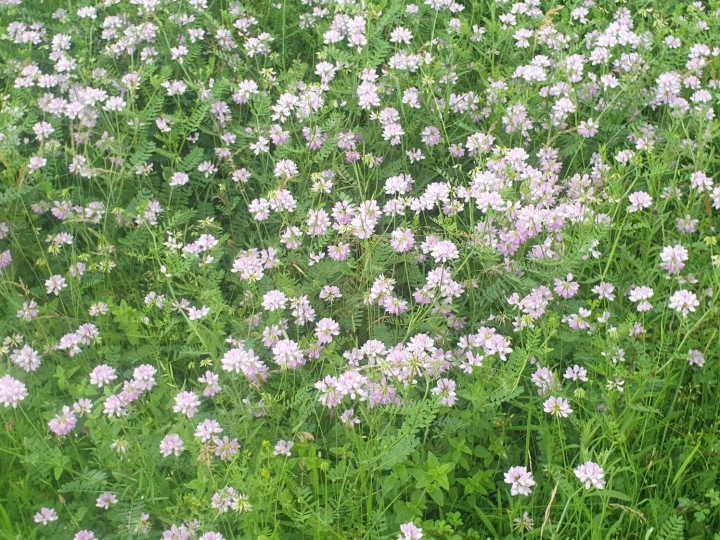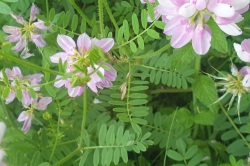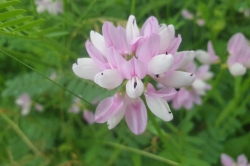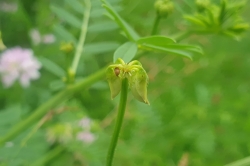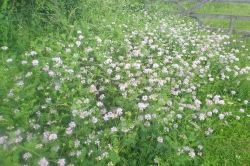A striking and beautiful plant, crown vetch is poisonous. Introduced and planted as a fodder crop for ruminants it has escaped and is found in the wild. In the USA it is also planted for erosion control and a garden flower. Not common in the UK but one worth knowing about as a ‘purple’ vetch to avoid. Thankfully it is easily identified with its flowers held up some 5-10cm above the stems on straight stalks, with its pink and white flowers arranged in a neat circle or crown. Growing in straggly ‘bushes’ it can grow over a metre tall and can reach metres in diameter where abundant.
Home / Hedgerow Guide /
Crown Vetch
Crown Vetch
| Hedgerow Type | |
| Common Names |
Crown Vetch, Purple crown vetch |
| Scientific Name |
Securigera varia |
| Season Start |
May |
| Season End |
Jul |
Please note that each and every hedgerow item you come across may vary in appearance to these photos.
Leaves
Typical vetch leaves, 5 -10 opposed pairs slightly tapering towards the tip, 2 – 5cm in length.
Flowers
Dramatic pink and white pom-poms held up above the vegetative stems. Each flower head consists of 10 to 20 pale pink to white pea style flowers.
Seed Pods
The seed pods start off short and axe like before extending into the more characteristic long pea shape.
Other Facts
Native to Europe and Asia it is naturalised in the UK but only an occasional find. It is edible for cows and sheep i.e ruminants who can break down the toxic nitroglycosides, but not for non-ruminants in substantial amounts such as horses and humans so best avoided. As well as fodder it has been utilised as erosion control in the USA as its ground covering nature and deep roots bind the soil. Alas this also means it crowds out other species and is now listed as an invasive species in some states. Varieties have been bred specifically for gardens to show off the mass of bright flowers. In the UK it is rarely planted as a fodder and is only seldom seen in the wild.

